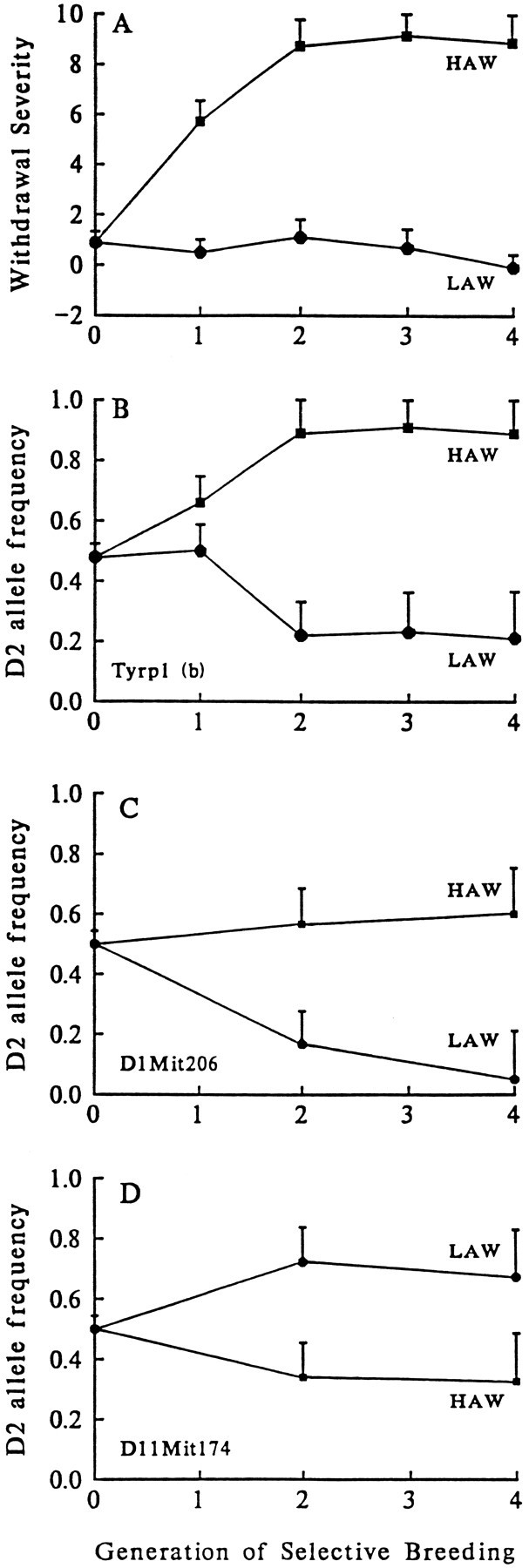Fig. 3.

Allelic frequencies at loci on chromosomes 1, 4, and 11 cosegregate with phenotypic selection for acute alcohol withdrawal severity. A, The selection response [mean ± SEM is shown for the first four generations of selective breeding (S1–S4)] for differences in acute withdrawal liability (HAW and LAW). On they-coordinate, alcohol withdrawal severity is shown as the computed area under the curve(AUC), calculated on the basis of the time course for handling-induced convulsions measured between 4 and 12 hr after alcohol administration. B, In generations S1–S4, gene frequency at Tyrp1 for the D2 allele diverged in the two oppositely selected lines approximately in parallel with the trait under selection. By generation S2, the HAW and LAW lines differed in their gene frequencies (q) for the D2 allele for Tyrp1(qHAW = 0.89,qLAW = 0.22, z = 4.18,p = 1 × 10−5). Similarly, in generations S2 and S4, allelic frequencies at C,D1Mit206 (qHAW = 0.57,qLAW = 0.17, z = 2.47,p = 0.006 using generation S2) andD, D11Mit174(qHAW = 0.39,qLAW = 0.76, z = 2.34,p = 0.008 in generation S2) diverged approximately in parallel with alcohol withdrawal severity. Because allelic frequencies of the D2 and B6 alleles at the markers shown diverged in the HAW and LAW lines approximately in parallel with divergence of the trait under selection, these data indicate that QTL underlying differences in alcohol withdrawal between the HAW and LAW lines are linked to the markers Tyrp1 (chromosome 4, 38 cM),D1Mit206 (chromosome 1, 96 cM), andD11Mit174 (chromosome 11, 20 cM).
